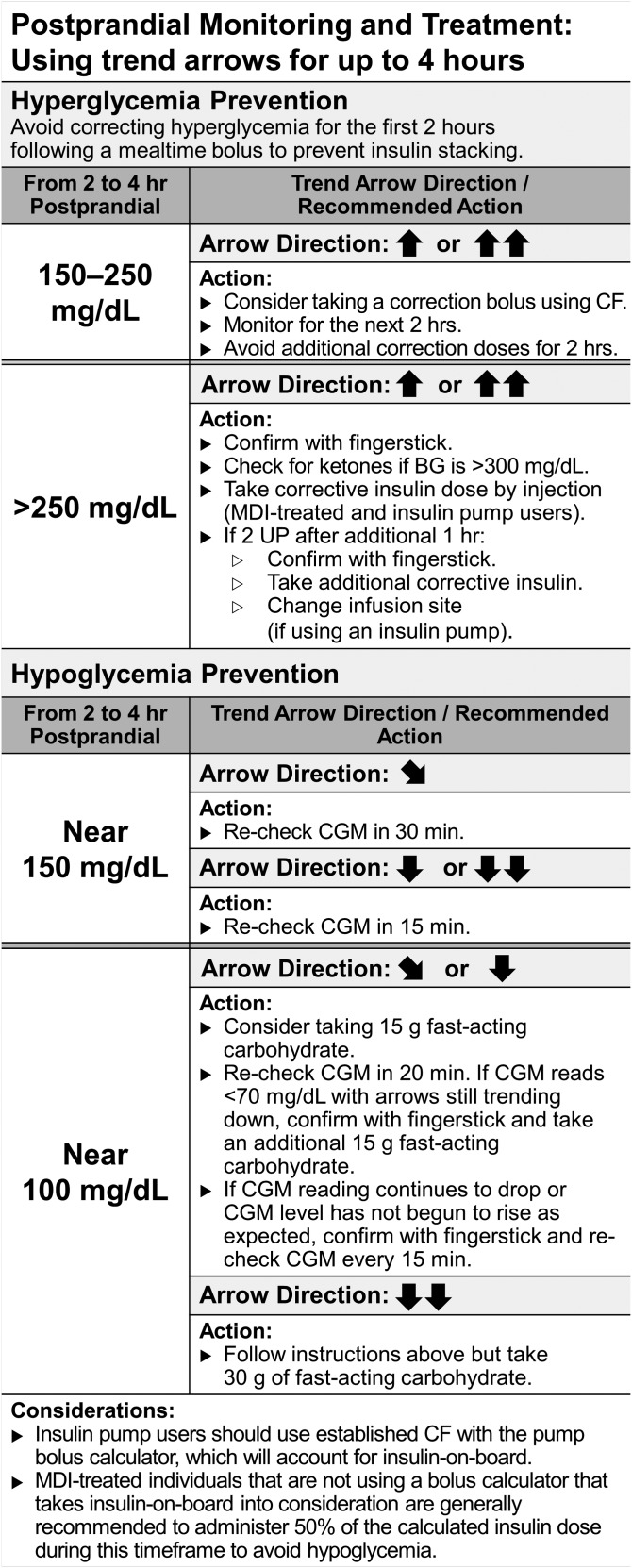Figure 4.
Approach to postmeal monitoring and treatment using trend arrows. These suggestions are based on the REPLACE-BG trial [19], which demonstrated that the use of nonadjunctive rtCGM for insulin dose decisions was a safe and effective alternative to conventional adjunctive CGM use. In that setting, instructions were given to participants to monitor trend arrows and minimize glucose extremes following meals. It is especially important to take a standard approach to prevent insulin “stacking” and provide correction at appropriate times following meals. Importantly, these suggestions only use the patient’s CF and do not use the adjustments for trend arrows presented in Fig. 3. It is recommended that no corrective action be taken within the first 2 hours of eating to prevent glucose extremes. Recommendations serve as a guide for postprandial monitoring and correction. Beyond 4 hours, it is assumed that most, if not all, carbohydrate has entered the system and that there is no active insulin on board. In this case, the authors recommend using the trend arrows for dose adjustment (Fig. 3). Conversion: mg/dL × 0.0555 = mmol/L. CGM, continuous glucose monitor.

